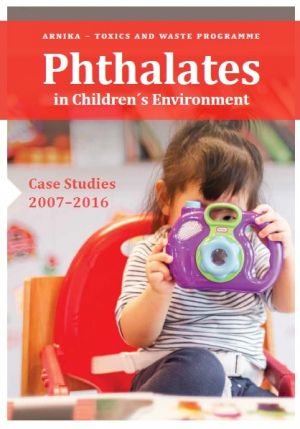This book summarized Arnika's research focused on phthalates in children's environment which was part of different projects during the years 2007 - 2016.
The Arnika Association has studied the issue of phthalates and their presence in consumer products for many years. A special emphasis is put on products that children come into direct contact with. High numbers of goods intended for children are manufactured from plastics, specifically plasticized polyvinyl chloride (PVC), and thus, these products are a potential source of phthalates that have negative impacts on human organisms. Children, especially the youngest ones, are a group particularly sensitive to negative impact of phthalates, if they come into direct contact with them, or stay in an environment into which phthalates are released from PVC.
Phthalates enter the human organism not only through respiratory tract, but also through skin and mucous membranes. Thus, when children lick various toys, and crawl on the floor made of PVC, they are exposed to the adverse impacts even more than adults. The purpose of this case study is to summarise results of the individual analyses and studies carried out by Arnika between 2007 and 2016. Until now, many of them have been published in annexes to press releases only, or have stayed in our files in the form of reports on chemical analyses. We consider useful to provide an overall picture on the issue of phthalates in the environment and products around us, based on many years
of analyses. We are aware that legislation regulating phthalate use has changed considerably since 2007, what we tried to sum up in Chapter 11 of this summary study. Simultaneously, we would like to draw attention of the readers to the fact that progress in phthalate replacements was caused just by the changes in legislation. However, often the most regulated phthalate DEHP (di(2-etylhexyl) phthalate) was substituted with new substances from this group, that are also hazardous, only, e.g. DOIP (bis(2-ethylhexyl) isophthalate).







